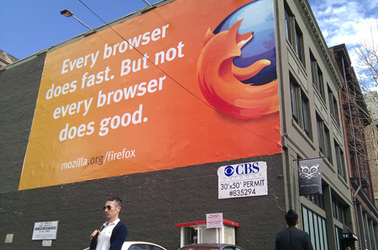This article is more than 1 year old
The legacy IE survivor's guide: Firefox, Chrome... more IE?
Ask yourself, how many times do you want to rewrite?
The ActiveX factor
If, on the other hand, your app relies on tons of ActiveX elements, it's going to be much harder to update it to break out of the Microsoft's view of the world.
While ActiveX made it easy-to-build apps by connecting your code to system code – ie, no need to write a video player, just call the ActiveX control – it also tightly integrated your app with the (now obsolete) system code. Easy at the time, difficult down the road.
What do you do if your company just doesn't have the resources to update a mission-critical app before April 2014? There is one possible stopgap measure that may help, Internet Explorer's Compatibility View that was introduced in IE8.
While the end goal should to be a move away from vendor lock-in to standards-compliant systems, sometimes it's just not possible to do everything at once. To help ease the transition from IE6 to something a bit more modern, you may want to, at least for a time, follow Microsoft's upgrade path. That is, jump from IE6 to IE8 or higher and use Compatibility View to make apps built for IE7 render as IE7 in IE10.

Mozilla: doing good?
The question is how far should you jump? IE9? IE10? Obviously, IE7 and 8 are out. Now IE11 is on the horizon. Fortunately you can narrow that considerably by just bearing in mind that the real key to making your legacy apps work is Compatibility View. In other words, there's no reason not to jump all the way to the latest version, IE10 at the time of writing.
IE10 can emulate IE7 just like IE8, but the rest of the time your employees will be using a much better browser. IE10 is faster, supports more modern web standards and offers a cleaner user interface. IE10 is the best version of IE that Microsoft has ever shipped and if you're going to upgrade, you may as well upgrade all the way to IE10.
To make sure that IE10 still renders your legacy intranet app properly, you'll just need to add a meta tag to your tag to your app's head tag. The Internet Explorer Dev Center has full details on the various ways you can turn on IE10's Compatibility Mode. Probably the simplest is to just add a "X-UA-Compatible" meta tag to your apps' HTML head tags. That will tell IE10 to render the page as IE7 would have.
For some apps this may help, but note that it's emulating IE7, not IE6. None of Microsoft's later releases are capable of rendering as IE6. It really was that bad.
While even rendering as IE7 may not work completely, it should mean a little less work since it shares many of the non-standard behaviours (ActiveX, etc) of IE6 ... and many of its rendering quirks as well. Ideally that means you'd just need to make a few changes to get your legacy apps working in IE10 compatibility mode. There is also an IE5 mode that emulates what's known as "quirks mode" that you can try if IE7 mode just isn't cutting it.
Between these two compatibility modes, most apps should be able to escape the it's-all-going-to-hell-in-April woods. Moving to IE10 for your legacy apps means you can also move to Windows 7, if not all the way to Windows 8. This is not, however, a future-proof solution.
What you want to do is shift platform support. That is: instead of supporting Microsoft, support the web.
What you've done so far is shift browser support. If you would like to move away from not just the dead-end legacy apps it's still dependent on, but the very reason those dead end apps are still around, you might want to kick IE to the curb.
What you want to do is shift platform support. That is, instead of supporting Microsoft, support the web. Build to web standards as defined by the W3C and you're no longer beholden to any one browser or any one company.
Provided you do that, you're free to move away from IE completely. That opens any number of possibilities, though the most enterprise-friendly options are Firefox and Google Chrome.
Mozilla offers an Extended Support Release (ESR) of Firefox aimed at enterprise environments. Each ESR release of Firefox is maintained for approximately one year, with point releases containing security updates coinciding with regular Firefox releases (currently every six weeks). Support is limited to Mozilla Enterprise Working Group mailing list.
